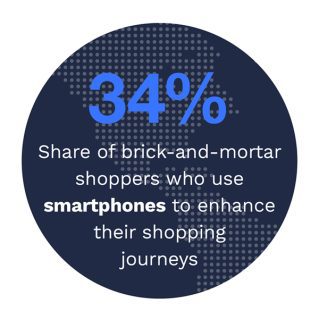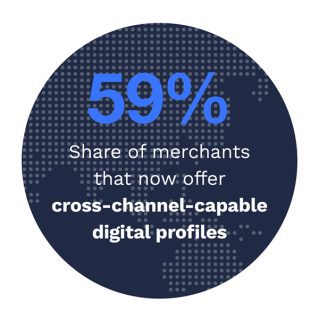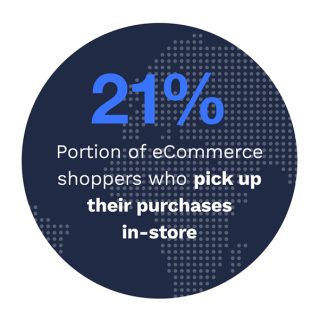Six Country Study Confirms Mobile Phone Is Modern Shopping’s Must-Have

Global retail has been reborn, and Global Retail 2.0 is driven entirely by smartphones. Forty-two percent of all brick-and-mortar shoppers across Australia, Brazil, Mexico, the United Arab Emirates, the United Kingdom and the United States now use their smartphones at least once throughout their retail shopping journeys.  They do so to check product reviews online, search for product information, access coupons, place online purchases for curbside pickup or even pay using digital wallets at the brick-and-mortar point of sale.
They do so to check product reviews online, search for product information, access coupons, place online purchases for curbside pickup or even pay using digital wallets at the brick-and-mortar point of sale.
These are just a few ways shoppers worldwide are using smartphones and other connected devices to transform how they engage with their merchants, according to PYMNTS’ 2022 Global Digital Shopping Index, in collaboration with Cybersource. We surveyed six census-balanced panels of consumers across six key markets — Australia, Brazil, Mexico, the UAE, the U.K. and the U.S. — to learn what they expect from their shopping experiences and merchants in 2022 and beyond. Our respondents numbered more than 13,000 in total. We also surveyed more than 3,000 merchants in these six countries to determine where they are meeting local shoppers’ expectations and how they can improve their offerings to drive sales.
Key findings from our research include the following:
• Consumers have changed how they shop in physical stores, intertwining the digital shopping experience. Nearly two years into their own digital transformations, consumers worldwide have changed how they use the physical store and their smartphones to improve the in-store shopping experience.
• Merchants are moving digital, making these features a priority regardless of where consumers shop. Sixteen percent more merchants allow users to set up digital profiles accessible across multiple devices than in 2020, and 17% more support mobile features that consumers can use to enhance their in-store shopping experiences than in the same period.
• Consumers are more satisfied with merchants that integrate mobile and digital features into the physical store experience. Consumers who use their smartphones when shopping in-store have far smoother shopping journeys than in-store customers who do not use their smartphones. Merchants that offer “smartphone-assisted” shopping features provide an in-store experience 49% less friction-laden for consumers than nonmobile-assisted shopping, according to the consumers who shop with them.
However, delivering on global shoppers’ expectations for an integrated, cross-channel shopping experience takes more than providing smartphone-based features like apps and digital wallets.
To get the full scoop, download the index.

